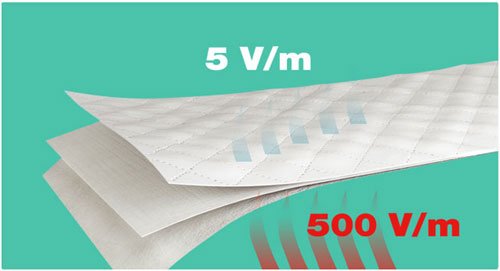No matter if you live in an apartment or a house, or you just need to ensure that your house is free of electromagnetic fields, there are a number of ways you can reduce exposure. One of the easiest is to limit the use of electronic devices. You could also consider EMF blocker paint to block EMF radiation from entering your home. Another way to shield your home against EMF radiation is to use a RF shielding canopy. It is a type made of net that has EMF shielding. It is utilized to block EMFs from entering a room. Another option is to get your house equipped with an enclosure that is conductive. click here are known as Faraday cages.
Numerous studies have demonstrated how the non-ionizing energy of RF produces antiproliferative effects in HCC cells. The mechanism behind AM RF EMF's anticancer activity in vitro is believed to involve down-regulation the cancer stem cell. This could be the reason for the long-term response seen in some patients with advanced HCC. However, the mechanism of AM EMF's effects on patients with cancer is not evident.
Aspects of AM RF EMFs on HCC tumor growth in vivo were studied in mice. The tumors were split into three groups. First, the group that was unaffected to RF EMF. Second group members were exposed to RF EMF at a frequency that is similar to the frequency used by humans. The third group was exposed to RF EMF with HCC-specific modulation frequencies. The impact of HCCMF on tumors was evaluated against that of RCF. The results indicated that tumours treated with HCCMF were significantly shrinking. However, tumours treated with RCF did not show any evidence of tumour shrinkage.
The mechanism of cancer-specific AM RF EMF could be based on the fact that cancer cells require Cav3*2 type voltage calcium channels for proliferation and down-regulation. AM RF EMF's ability to inhibit proliferation on HCC cells is caused by CACNA1H the protein that regulates the Ca2+ influx specific to tumors. The results indicate that CACNA1H could have wider implications in the treatment and diagnosis of many cancers.

The tumors in the controls were never exposed to RF EMF, and were fed a standard mouse diet. block emf of the HCCMF group were infected with Huh7 cells after they were between five and seven weeks old. The tumours were then euthanized after they had a high burden.
The tumors of the three groups showed different growth curves. The HCCMF-treated tumors had a significant reduction in size of the tumor after eight weeks. However, tumors treated with RCF didn't show signs of shrinkage. The difference was substantial. The tumors treated by RCF were able to show necrosis that is common when tumors are exposed to RCF. The possibility is that the necrosis was due to the lack of oxygen in larger tumours.
In summary, the results suggest an AM-RF EMF is a powerful source of anticancer activity in vitro and in vivo. emf blockers of studies have proven the fact that AM RF EMF produces measurable reduction in tumours in HCC patients. It is possible that AM RF EMF causes these effects due to CACNA1H, a protein that is involved in the process of tissue-specific Ca2+ influx. In addition, AM RF EMF may have a long-lasting impact on the development of HCC tumors in living tissue.
